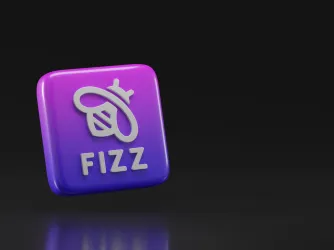Table of Contents
Fear and Bureaucracy: A Foul Symbiosis

In an article last week for The Nation, Michelle Goldberg hit the nail on the head when she observed that “there’s a symbiosis between student demands for emotional safety and the risk-aversion of bloated bureaucracies.” Goldberg described the experiences of professors Teresa Buchanan, Laura Kipnis, and Patti Adler, all professors who have been accused of harassment, and whose cases FIRE has monitored and addressed. In so doing, Goldberg went to the core of an issue that is anathema to academic freedom:
A confluence of factors has created the current environment. Certainly, part of what’s at work is the emergence of a very crude sort of identity politics that valorizes knee-jerk offense taking. As Shira Tarrant, a professor in the Women’s, Gender, and Sexuality Studies Department at California State University, Long Beach, says, “Ways of communicating on Twitter, or takedown culture, are infusing the classroom.”
More significant, however, is the pusillanimity of campus bureaucrats who are terrified of lawsuits, particularly in the wake of the Department of Education’s Title IX investigations into campus handling of sexual assault. Ange-Marie Hancock, a professor of political science and gender studies at the University of Southern California and author of Solidarity Politics for Millennials: A Guide to Ending the Oppression Olympics, observes that attacks on academic free speech are not just coming from the left. She points to Steven Salaita, whose job offer at University of Illinois was withdrawn due to tweets that were hostile to Israel, and Shannon Gibney, a tenured African-American English professor at Minneapolis Community and Technical College who was reprimanded for creating a “hostile learning environment” for white men.
It’s not just “Twitter culture,” however. As FIRE has been warning for some time, the increasing demands of students, coupled with the accommodation of college bureaucracies, poses an existential danger to academic freedom and free expression on college campuses. It was these trends to which pseudonymous professor Edward Schlosser was referring when he wrote for Vox last month:
The student-teacher dynamic has been reenvisioned along a line that's simultaneously consumerist and hyper-protective, giving each and every student the ability to claim Grievous Harm in nearly any circumstance, after any affront, and a teacher's formal ability to respond to these claims is limited at best.
The fear-and-accommodation trend has already begun to poison two of the most important functions of professors: teaching and grading. Students have already realized that they can leverage this dynamic to have their grades adjusted. In her article, Goldberg details such a situation with the case of Emory University professor David Samuel Levinson. Levinson recounts an accusation of sexual harassment by a student, after awarding the student a “B” grade in his class. According to Levinson, even though the administration agreed the sexual harassment accusation was facially frivolous, they nonetheless counseled him to accede to the student’s demands.
In the classroom, these trends have been given form through the twin concepts of “microaggressions” and “trigger warnings.” Writing in New York magazine in January, Jonathan Chait describes those terms thusly:
At a growing number of campuses, professors now attach “trigger warnings” to texts that may upset students, and there is a campaign to eradicate “microaggressions,” or small social slights that might cause searing trauma. These newly fashionable terms merely repackage a central tenet of the first p.c. movement: that people should be expected to treat even faintly unpleasant ideas or behaviors as full-scale offenses.
While these concepts may have some pedagogical use in the fields of psychology and psychiatry, the misappropriation of them as concepts to apply to (rather than to teach in) the classroom is deeply flawed. Both the University of Wisconsin-Stevens Point and the entire University of California System have begun to “educate” professors on avoiding microaggressions, including statements like “America is a melting pot” and “I believe the most qualified person should get the job.” While these policies are thus far claimed to be voluntary and informal, they will undoubtedly contribute to the chilling effect on speech that faculty already experience.
Similarly, the trigger warning concept is slowly gaining traction. Next year, Columbia University will no longer include Ovid’s Metamorphosis in its introductory humanities course. Agitation by trigger warning proponents caused the removal of Ovid’s work, though their larger aim of adding a mandatory trigger warning was unsuccessful, for now at least.
Perhaps the most insidious effect of trigger warnings has been on the study of criminal law. In describing a growing trend at law schools, Jeannie Suk, professor at Harvard Law School, points out that “[o]ne teacher [she] knows was recently asked by a student not to use the word ‘violate’ in class—as in ‘Does this conduct violate the law?’—because the word was triggering.” She notes that many incoming law professors are afraid to teach rape law at all, excluding the important area of law entirely because “it’s not worth the risk of complaints of discomfort by students.”
The threat to academic freedom posed by the synthesis of these trends is growing, and we’re likely to see more of these cases. In Goldberg’s leading example of Theresa Buchanan, we see even tenure, that historically powerful protection of academic freedom, laid low by the bureaucratic appeasement of student fear over a professor’s use of “Fuck no.” While this may be just the most recent and egregious violation of this trend, let us hope that it marks the high-water mark.
Recent Articles
Get the latest free speech news and analysis from FIRE.

FIRE's 2025 impact in court, on campus, and in our culture

The trouble with banning Fizz

VICTORY: Court vindicates professor investigated for parodying university’s ‘land acknowledgment’ on syllabus
